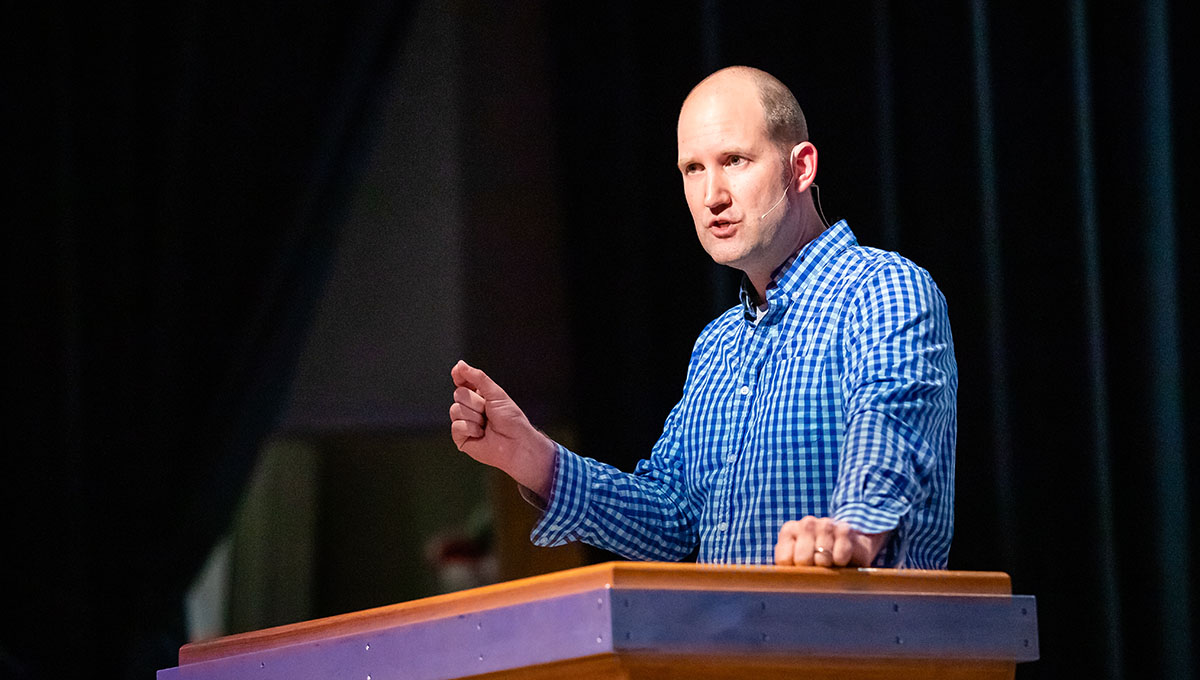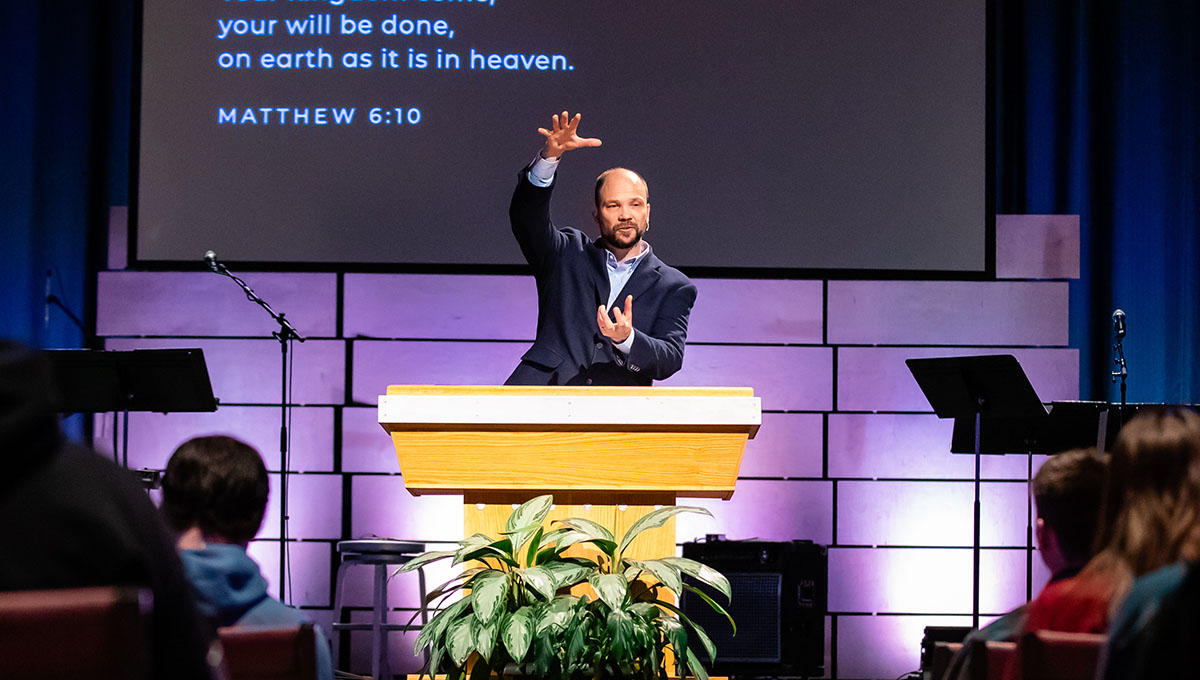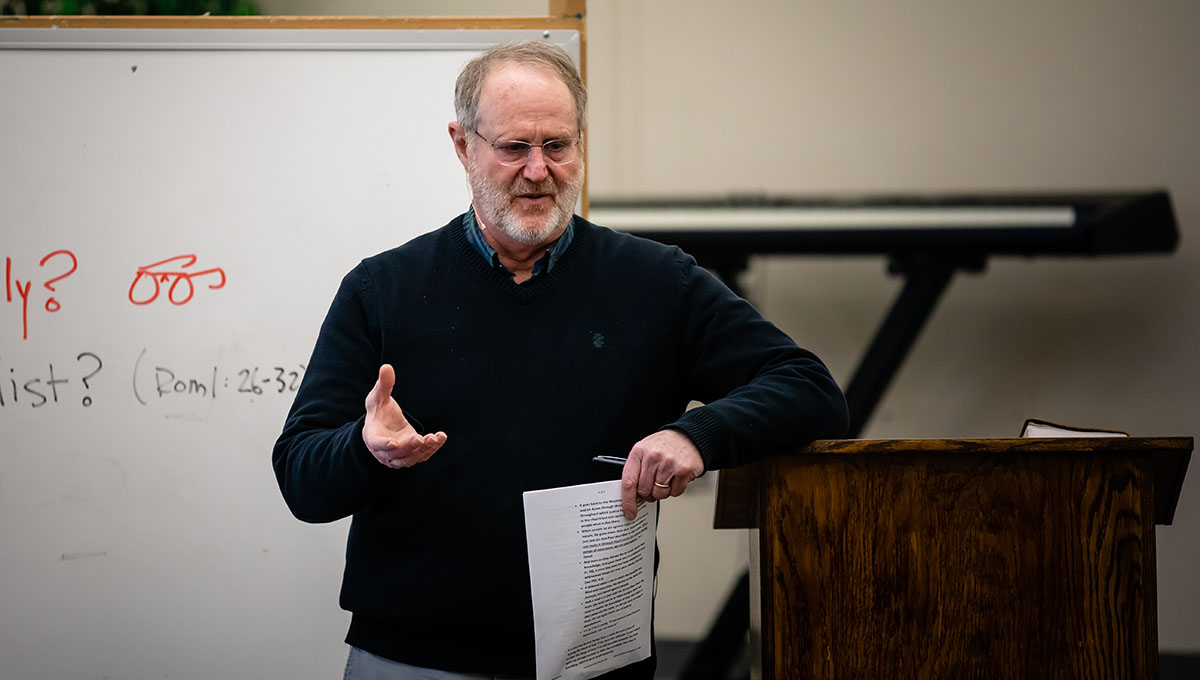The Devil’s Causeway
- Nathan Schneider

Sixteen miles southwest of Yampa, CO, nestled in the heart of the flattened basaltic domes of the Flattop Wilderness lies as notorious and imposing stretch of trail called The Devil’s Causeway. Daring hikers park their vehicles at the trailhead at Stillwater Reservoir and make their way past stunning meadows and eerie forests on the six-mile trek, eventually hitting a series of switchbacks that takes them to the top of a large mesa. At 11,800, the trail towers over the landscape below it, nearly 1,600 feet higher than where the trail first began. The trail then continues to another mesa, but not before traversing a 50-foot long section of causeway connecting the two mesas together. The causeway is all at once spectacular and terrifying. For fifty long feet, hikers make their way across the causeway, which at points narrows to only four feet across. Either side of the causeway terminates abruptly in a sheer rock face that stretches down more than 200 feet. As one writer put it, “It is said that nearly everyone who attempts the crossing is quite literally brought to his or her knees, scrambling across the rocky path in a low squat.”
These photos pretty much speak for themselves. I’ve hiked over this causeway as a teenage with my family, and it was definitely intense. Those prone to vertigo need not apply:
From below the causeway on the southern side of the loop looking back at the ridgline.
Looking from one mesa to the other. The causeway is relatively short, but 50-feet is a long way to hike when death is only a few feet away on either side.
The causeway, slightly dramatized by a good ol’ wide-angle camera lens.
The Divine Causeway
Colorado’s Devil’s Causeway is a real-life thrill-ride-like illustration of what it’s like to live and balance Christian life. Really, if we boil down the Christian life into the broadest of categories, it really comes down to two things: life and doctrine. Orthodoxy and orthopraxy. Right conduct and right belief. That’s it. Don’t believe me? Consider Paul’s words to Timothy:
- 1 Timothy 1:18–19 – This command I entrust to you, Timothy, my son, in accordance with the prophecies previously made concerning you, that by them you fight the good fight, keeping faith (doctrine) and a good conscience (life), which some have rejected and suffered shipwreck in regard to their faith.
- 1 Timothy 4:6–7 – In pointing out these things to the brethren, you will be a good servant of Christ Jesus, constantly nourished on the words of the faith and of the sound doctrine (doctrine) which you have been following. But have nothing to do with worldly fables fit only for old women. On the other hand, discipline yourself for the purpose of godliness (life).
- 1 Timothy 4:16 – Pay close attention to yourself (life) and to your teaching (doctrine); persevere in these things, for as you do this you will ensure salvation both for yourself and for those who hear you.
Right belief (orthodoxy) and right conduct (orthopraxy) feed and fuel each other. Having bad doctrine inevitably leads to ungodly living. On the flip side, when someone desires to justify a sinful lifestyle, they tend to try and adjust their doctrinal positions to allow for and defend their conduct. Both matter. Both are connected. And so both must be clung to with care and concern.
If church history has demonstrated anything, it’s that the devil can find a way to distort God’s truth by tipping it off the perfect balance he has set it on. Life a hiker set precariously in the middle of a narrow causeway, the Christian is called to make his way along the Divine Causeway of biblical truth and godliness. On either side of this causeway are the sheer drop-offs created by the devil to capture the clumsy, unsure footing of the believer or so-called believer who is, as Paul told Timothy, not paying “close attention to yourself and to your teaching.”
In the spirit of the infamous Devil’s Causeway, I’m going to take the next several blog cycles (spread out over the next few months) to explore what I’m dubbing the “Divine Causeway”: the key doctrines and issues that require the Christian to navigate the narrow balance of right doctrine and right conduct. None of these issues are new. In fact, they all stem from conflicts and events that the church dealt with over the past twenty-two hundred years of history. My hope is that through a mixture of Bible study and historical theology, you’ll begin to see how God has shaped and laid out his causeway of orthodoxy and orthopraxy and how the devil tries to pull believers off the trail on one side or the other. And first up on the docket: the person of Jesus Christ.
Biblical Christology
The biblical doctrine of the person of Jesus Christ clear affirms that Jesus is one person, yet possessing two natures, one human, and one divine. There’s mystery in this. There’s paradox in this. How can he be fully human and fully divine simultaneously? That reality is beyond our finite ability to comprehend. And yet it is real and it is what the Bible presents as the only orthodox position on the person of Jesus Christ, and it was recognized by the church very early on.
SIDE 1: Gnosticism and the Denial of Jesus’ Humanity
Satan’s first attempt at pulling hikers over the edge on the person of Christ came very early on. One of the first issues that arose in the post-apostolic church (the century immediately following the death of the apostles) was the rise of Gnosticism.
Gnosticism comes from the Greek word gnosis, meaning “knowledge,” and if there’s one unifying element to this broad teaching, it’s the idea that God has given “special knowledge” to certain people about the world and salvation and that this special knowledge is the true way to be realigned and reconnected with God. Roger Olson summarizes gnostic teaching well:
In a nutshell, they believed that matter, including the body, is an inherently limiting prison or even evil drag on the good soul or spirit of the human person and that the spirit is essentially divine—a “spark of God” dwelling in the tomb of the body. For all of the Gnostics, salvation meant achieving a special kind of knowledge not generally known or even available to ordinary Christians. That gnosis, or knowledge, involved awareness of the true heavenly origin of the spirit within, its essential divine nature as an offshoot of God’s own being, and Christ as an immaterial, spiritual messenger sent down from the unknown and unknowable God to rescue and bring home the stray sparks of his own being that had become trapped in material bodies. They all agreed that Christ did not actually become incarnate as Jesus but only appeared to be human. (Roger Olson, The Story of Christian Theology, 29).
That last line is especially important for our discussion here. Obviously, there was a lot of doctrinal issues at play in Gnosticism which led to a lot of other issues, including spiritual elitism, secrecy, and division in the church. The Gnostics claimed to have a secret knowledge and tradition that was passed down to them directly from the apostles and it directly conflicted with the teachings of the heirs of apostolic teaching, i.e., the early-church fathers such as Irenaeus of Lyons, who composed a full-on refutation of Gnosticism and defense of the biblical apostolic tradition.
The driving theological spark of Gnosticism was the dualism between the spiritual and the physical. In their view, God was completely transcendent and spiritual. He was not responsible for creation, but instead an evil or lesser god created the universe. That act caused “sparks” or “droplets” of God’s spiritual substance to become trapped in physical bodies. “The Fall” as they viewed it, was not a fall of a good and perfect creation into sin but the very act of creation itself which incarcerated divine sparks in material substance, leading to spiritual conflict. The only way of escape from this was to be freed from this incarceration and travel back to God. God started that process by sending an emanation of himself “who descends through layers and layers of reality from pure spirit to dense matter and attempts to teach some of the divine sparks of Spirit their true identity and home” so that “once awakened, they are able to begin the journey back” (Olson, 37).
Of course, if Jesus is actually God in the flesh, then the dualism inherent in Gnosticism tends to break down. Thus, gnostics dealt with this issue in one of several ways. Some simply denied Jesus’ humanity all together, arguing that he only “appeared” human, a position known as docetism (from dokeo, “to seem” or “to appear”). Others held that Christ entered into Jesus at his baptism and then departed from him just before he died, but was never truly human himself and, of course, is not human now.
Even though Gnosticism as a fully fleshed-out movement didn’t appear until the 2nd century, there appear to be elements of this movement developing even during the time of the apostles. Both the apostles Paul and John wrote letters to churches who appeared to be influenced by false teachers were infiltrating the church with gnostic-like conceptions of Jesus’ humanity. You can hear it in Paul’s statements in Colossians when he asserts that Jesus is “the image of the invisible God, the firstborn of all creation” (Col. 1:15), and that “it was the Father’s good pleasure for all the fullness to dwell in Him” (Col. 1:19). Later, he cautioned the Colossians not to let themselves be taken captive through worldly philosophies and empty deceptions and trickeries of men, proclaiming that “in him all the fullness of deity dwells bodily” (Col. 2:9).
The apostle John, likewise, seemed to deal with pre-gnostic teachings in his first epistle. He opened his letter by emphasizing that that “which we have heard, which we have seen with our eyes, which we looked upon and have touched with our hands, concerning the word of life” (1 John 1:1), indicating that Jesus was more than just a physical allusion, but was a real person, bodily person come in the flesh. Later on he wrote that “every spirit that confesses that Jesus Christ has come in the flesh is from God, and every spirit that does not confess Jesus [has come in the flesh] is not from God” (1 John 4:2–3).
What kind of impact does this kind of doctrinal unorthodoxy have on conduct? Well, apart from the very real impact it has on our understanding of salvation and atonement—how can Jesus represent humanity if he isn’t human?—there are the moral implications of this type of worldview. The same divisive, secretive, spiritual elitism that marked 2nd-century Gnosticism permeates into other movements. The New Age movement that pervaded wider society beginning in the ’70s is a 20th-century expression of Gnosticism. As Olson remarks, “Wherever people denigrate material, physical existence in the name of ‘spirituality’ or for the same reason elevate human soul or spirit to the status of divinity, the heresy of gnosticism is encroaching once again on the apostolic message and infecting Christianity” (Olson, 31).
SIDE 2: Arius and the Denial of Jesus’ Deity
About a hundred or so years after Gnosticism came on the scene, a distinct but related issue arose in the church. Whereas Gnosticism attacked the person of Christ in his humanity, recognizing only his deity and devaluing or even denying the importance of his humanity, a different threat appeared. This time, the deity of Christ was in the crosshairs. The other side of the Divine Causeway was established.
In the beginning of the 4th century A.D., a man named Arius came onto the scene. Probably of Libyan origin, Arius was a Greek rationalist who incorporated a distinctly eastern-Christian doctrinal framework onto his conception of Christ. His teachings became known as Arianism, which held that the Son of God did not always exist and that God was not always a father. Rather, if everything was indeed created out of nothing, then the same had to be true of the divine Logos. Thus, he viewed the Son as a creature that had a beginning of existence. Though he was ranked far higher than other creatures, he was still a creature, and since God is unknowable to his creatures, he must also be unknowable to the Son. Arius stressed that all the biblical passages that seem to suggest the divinity of the Son are simply utilizing honorific and metaphorical language.
In comes the man of the hour. Athanasius (c. 296–373) was the bishop of Alexandria and he stood in defense of this biblical doctrine against Arianism, which he believed was a serious departure from biblical truth. He argued his position based on two premises.
His first premise was that no creature can redeem another creature. As Hebrews emphasizes, it is impossible for the blood of bulls and goats to take away sin (Heb. 10:4). Thus, Athanasius argued that if Jesus was a mere creature, then he does not have the ability to save people from sin. He then concluded that if Arius is correct, then according to Arius, Jesus Christ cannot redeem humanity. On the other hand, if Jesus really can redeem humanity, then he must be God, because only God can save.
His second premise was that Christians are called to worship and pray only to the one true and living God. We are not allowed to bow down to and worship any creature (Matt. 4:10; cf. Rom. 1:25). Thus, if Jesus is a creature, then Christians must then be guilty of idolatry. But if we must worship Jesus, then likewise he must be divine.
There were moments during this debate when he appeared that Arius’ arguments would win out. But ultimately, Athanasius’ zeal for the truth was vindicated at the Council of Nicaea (A.D. 325) when the church rejected the Arian view and affirmed that the Son is of the “same substance” (homoousios) as the Father, not of a “similar substance” (homoiousios) as Arius had pushed, a difference of only a single Greek letter. (It’s been noted that never has there been so much energy spent over a single vowel!) It was the most important church council of the Patristic era.
Olson points out the heritage of Arianism in the larger religious panoply today:
“Although the Jehovah’s Witness organization and its teachings did not yet exist in the fourth century, the situation was as if it were about to become the belief of the entire Christian church. . . . Even before there was a New Testament to appear to as the written authority for Christian faith and practice, the implicit apostolic faith of early Christianity revolved around the scandal of the deity of Christ. The reason Christians held on to it tenaciously in the face of pagan ridicule and Roman persecution as well as all kinds of attempts to water it down was that it was the linchpin of the gospel. If it were removed in any way, then the hope for eternal participation in God’s own life and for forgiveness and restoration to the image of God would fall apart. The gospel itself would be wrecked” (Olson, 150).
That’s often how it is with life and doctrine. A narrow trail held between two tempting alternatives that plunge the person into heresy and moral oblivion. And the first and most prominent issue the church dealt with on this issue after the apostles died with with the person of Jesus Christ himself. But even before that, the apostles themselves dealt with another Divine Causeway . . . the careful balance of the Christian gospel between the cliff of legalism and the cliff of hyper-grace. That will be the topic of our next discussion.














